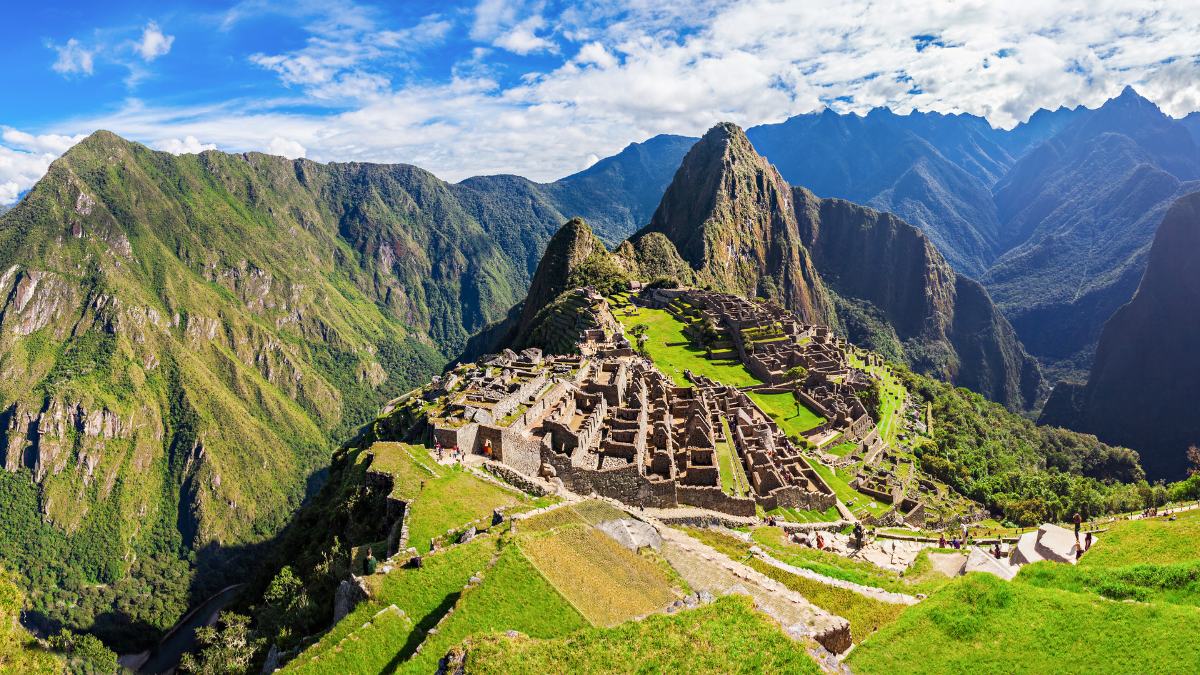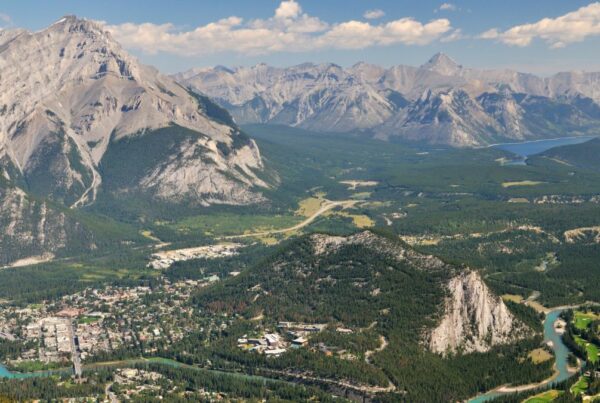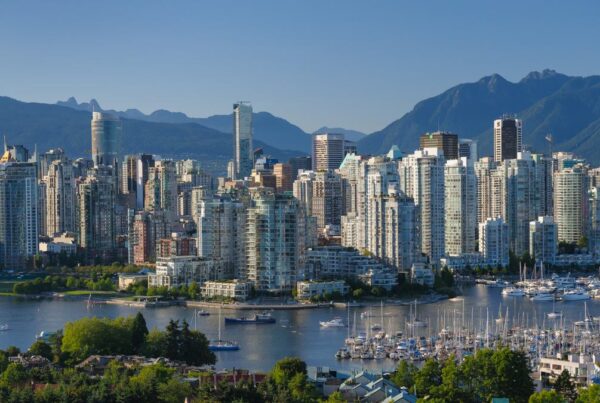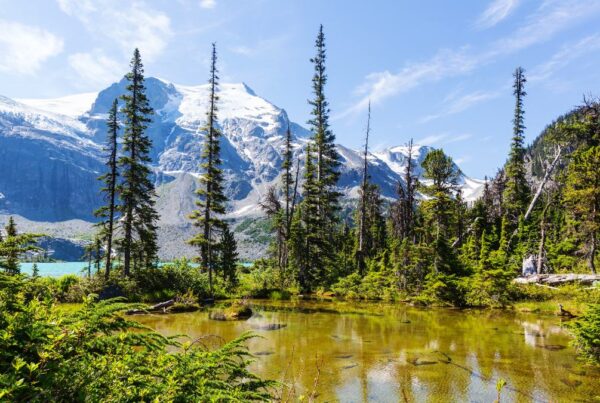Peru is paradise for hikers. From ancient Inca trails to glacier-fed lagoons and rugged canyon descents, the country is packed with high-altitude adventures that range from chill day hikes to soul-testing multi-day expeditions.
What makes hiking in Peru special isn’t just the scenery; it’s the story behind every step. You’re walking through sacred mountains, past centuries-old ruins, and into indigenous communities that still live in harmony with nature.
And then there’s the variety. Want a guided 4-day trek to Machu Picchu with gourmet meals and porters? Done. Or do you prefer a day hike around a glacier-crowned peak with nothing but alpacas and condors for company? There’s a tour for everyone. You’ll find everything from day hikes like Laguna 69 or Rainbow Mountain to full-blown epics like the Huayhuash Circuit and the Asungate Trek.
What all these hikes have in common is altitude, adventure, and a deep connection to nature. You’ll be challenged, awed, and probably a little breathless (in a good way!). And whether you’re going solo or with a group, you’ll walk away with legs of steel and stories for life.
1. Inca Trail to Machu Picchu
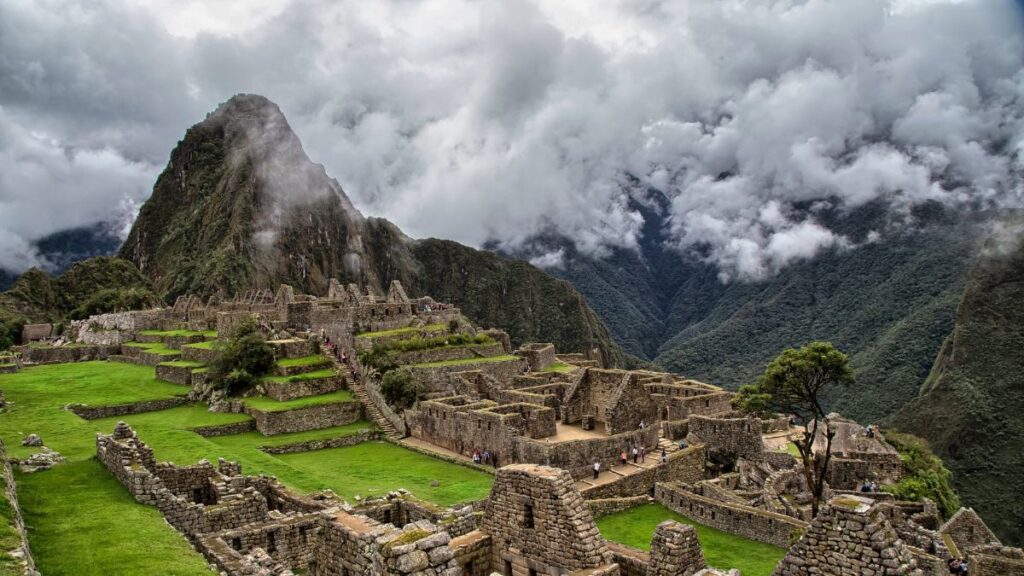
Distance: 42 km / 26 miles
Duration: 4 days
Max Altitude: 4,215m (13,828 ft)
Permit Required: Yes (limited to 500 people/day incl. porters)
The Inca Trail is the most iconic trek in South America. It follows the same stone paths the Incas walked centuries ago, winding through cloud forest, alpine tundra, and ancient ruins that you can only reach on foot. It all builds up to the grand finale, which is your first glimpse of Machu Picchu through the Sun Gate at dawn.
This is a guided trek with porters and cooks, so it’s surprisingly comfortable despite the elevation. Most hikers say the second day is the hardest, where you make the steep climb up to Dead Woman’s Pass at 4,215m (13,828 ft) but the high-altitude views and camaraderie on the trail help push you through.
Along the way, you’ll pass 500-year-old archaeological sites like Wiñay Wayna and Sayacmarca, many of which are just as impressive as Machu Picchu. You’re walking through living history with each step.
If this trail is on your bucket list, book months in advance because permits for the Inca Trail are limited and often sell out 4–6 months ahead, especially in high season (May–September).
2. Salkantay Trek
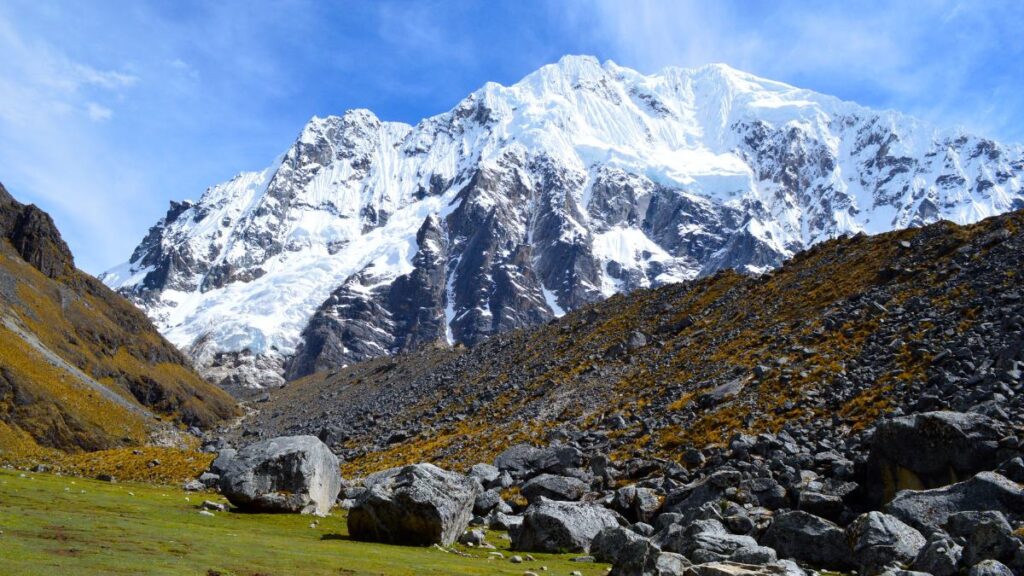
Distance: 72 km / 45 miles
Duration: 5 days
Max Altitude: 4,650m (15,255 ft)
Permit Required: No
The Salkantay Trek is the best alternative to the Inca Trail if you’re after fewer crowds and even more epic mountain vistas. It takes you up close to Salkantay Mountain, one of the most sacred and stunning peaks in the Peruvian Andes. Snow-capped, jagged, and wild… It’s the kind of awe-inspiring landscape that makes you feel small in the best kind of way.
The trekking route climbs high over the Salkantay Pass and then descends sharply into the jungle. One day you’re crossing a barren moonscape at 4,650 meters, and the next you’re hiking past waterfalls and orchids in warm, humid air. It ends with a visit to Machu Picchu, usually via train from Aguas Calientes.
Unlike the Inca Trail, you don’t need a permit to hike the Salkantay Trek, just a sense of adventure and decent legs. The trek is more physically demanding due to longer distances and steeper climbs, but it also offers more solitude and wilder landscapes.
Many tours include glamping-style tents or domes, hot meals, and even hot tubs at some of the campsites. If you’re looking for a peak experience that you’ll never forget, then I’d recommend doing the Salkantay Trek over the Inca Trail to Machu Picchu.
3. Ausangate Trek
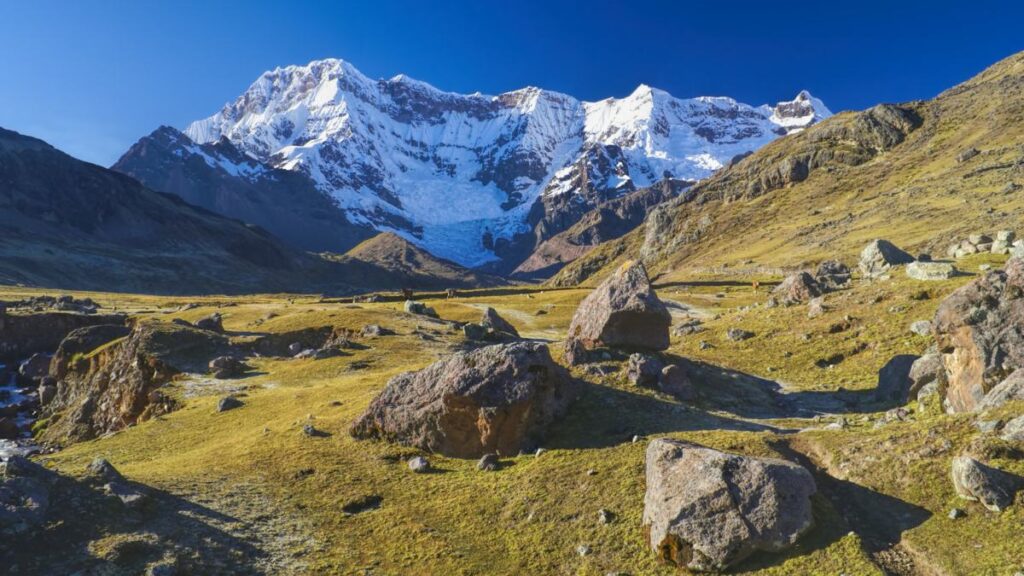
Distance: 70 km / 43 miles
Duration: 5–6 days
Max Altitude: 5,200m (17,060 ft)
Permit Required: No
Ausangate is Peru’s high-altitude beast. This trek doesn’t take you to Machu Picchu. Instead, it takes you far deeper into the Andes. You’ll circle the sacred Ausangate Mountain (translates from Quechua as the “father of all mountains), weaving through glacier valleys, neon-blue lakes, and herds of alpacas grazing beneath snowfields.
There are no hotels or hostels along the way as this is a much wilder experience that you’re going to want to train for months to prepare yourself. The trail is remote, so you’ll often have it to yourself. And yes, it’s cold, but that’s part of the thrill. Hot springs do appear at just the right moments.
The highlight in addition to Ausangate Mountain? Rainbow Mountain. Most hiking tours include a side trip there on the final day. You’ll also pass red hills, emerald lakes, and surreal scenery that doesn’t look real. It’s the Andes mountain range at its best.
You’ll need to be well-acclimated before starting this one. With multiple passes over 5,000m, it’s not a casual walk in the park. But for experienced hikers and mountain lovers, it’s an unforgettable experience.
4. Lares Cultural Trek
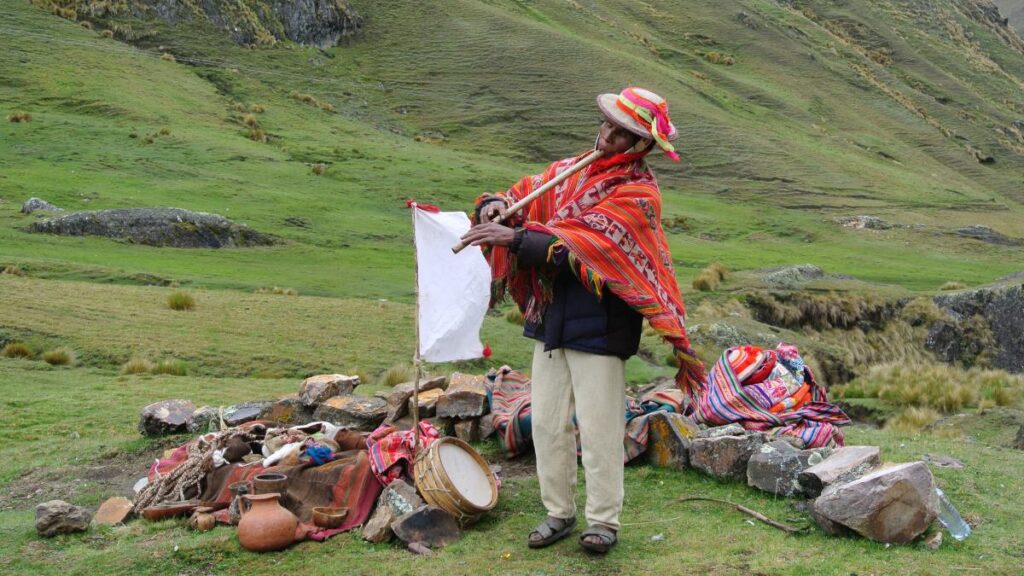
Distance: 33–40 km / 20–25 miles
Duration: 3–4 days
Max Altitude: 4,450m (14,600 ft)
Permit Required: No
The Lares Trek is the cultural soul of the Andes. While it doesn’t end at Machu Picchu directly, it takes you through remote mountain villages where life hasn’t changed much in centuries. You’ll meet Quechua families, walk alongside llamas and alpacas, and share coca tea with locals who live above 4,000 meters.
The landscapes are no slouch either. High passes, mirror-like glacial lakes, and snow-dusted peaks give the Lares Trek serious visual appeal. It’s also much quieter than the Inca Trail, so you get a more intimate connection with nature and the people who call these valleys home.
Most Lares treks end in Ollantaytambo, where you can catch the train to Aguas Calientes and finish with a day at Machu Picchu. It’s a solid option if you’re short on time or permits for the Inca Trail are sold out.
Lares is perfect if you want cultural immersion without sacrificing alpine scenery. Plus, there’s often the chance to soak in natural hot springs along the way.
5. Choquequirao Trek
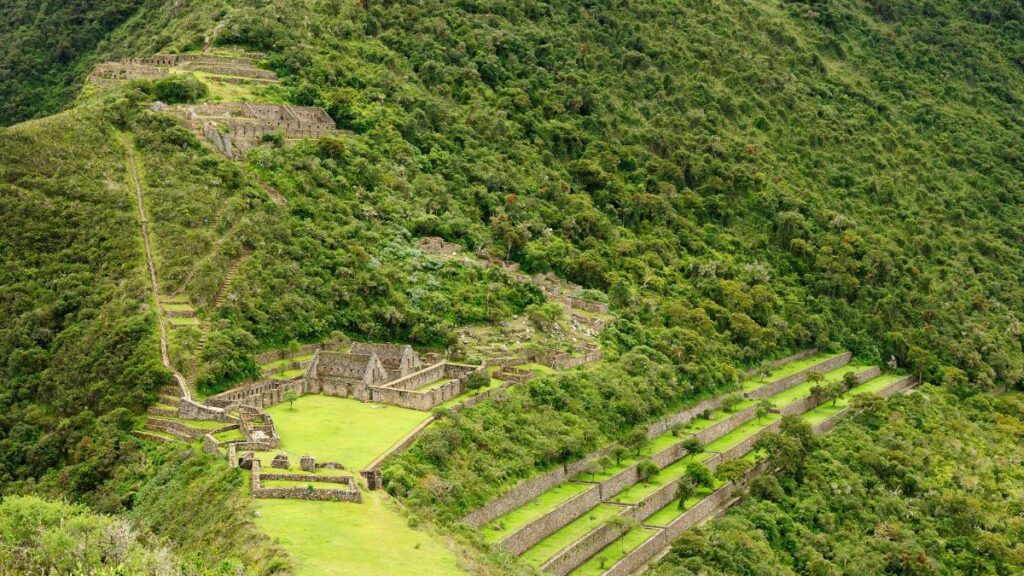
Distance: 64 km / 40 miles
Duration: 4–5 days (up to 9 if continuing to Machu Picchu)
Max Altitude: 3,050m (10,000 ft)
Permit Required: No
Choquequirao is Machu Picchu’s wild and overlooked sibling. Bigger, more remote, and almost empty compared to its famous counterpart, the ruins sit perched above the Apurímac Canyon like a hidden kingdom waiting to be discovered.
Getting there is no joke. You descend steeply into the canyon, then climb just as steeply back up. It’s a leg-burner, especially in the heat, but the reward is a sprawling Inca city that sees maybe 20 visitors a day. And it’s still being excavated, so you feel like you’re stumbling onto something lost to time.
For those with the stamina, you can extend the trek to Machu Picchu over 8–9 days. It’s a serious adventure for those who like their hikes long, quiet, and dripping with Inca mystique.
If you want to avoid the tourist circus in high season and have ruins all to yourself, this one’s for you.
6. Vilcabamba Traverse to Machu Picchu
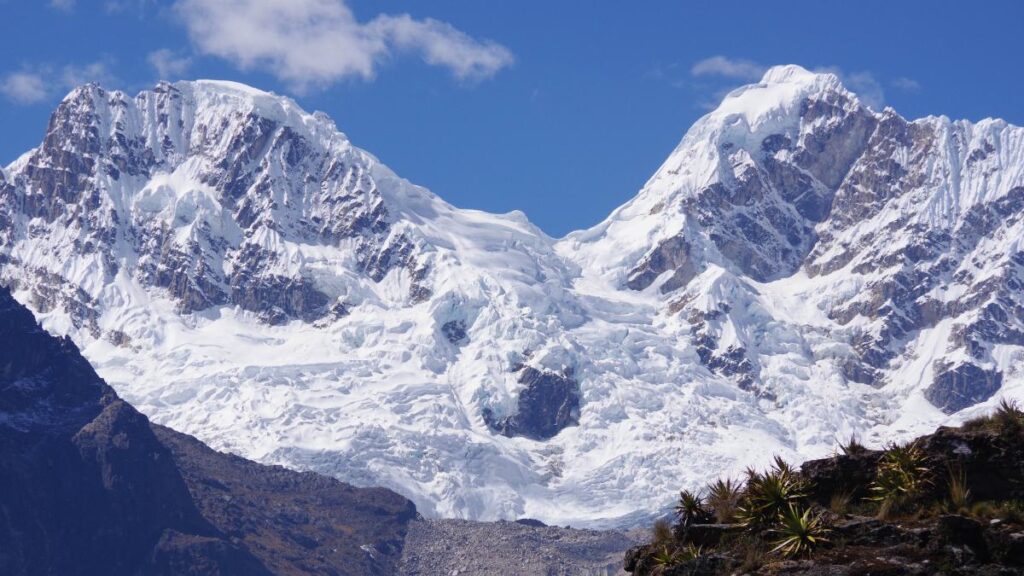
Distance: 60–70 km / 37–43 miles
Duration: 6–7 days
Max Altitude: 4,500m (14,763 ft)
Permit Required: No
This route follows the trail of the last Incas as they fled Spanish conquest. It’s less known, less travelled, and a rawer journey through the Vilcabamba mountains, which are dense with jungle, legends, and thick Inca resistance vibes.
You’ll pass little-known ruins like Vitcos and Ñusta Hispana, explore forgotten trails, and hike through ever-changing ecosystems. From high-altitude ridges to steamy jungle valleys, this is Peru in its wilder form. The final push takes you to Aguas Calientes for your Machu Picchu finale.
This is a remote and rugged trek. A local hiking guide is highly recommended, not just for safety, but for the deep historical context. You’re literally walking in the footsteps of the last free Incas.
If you’re after something truly off the grid with a heavy dose of myth and adventure, the Vilcabamba Traverse to Machu Picchu delivers in spades.
7. Santa Cruz Trek (Cordillera Blanca)
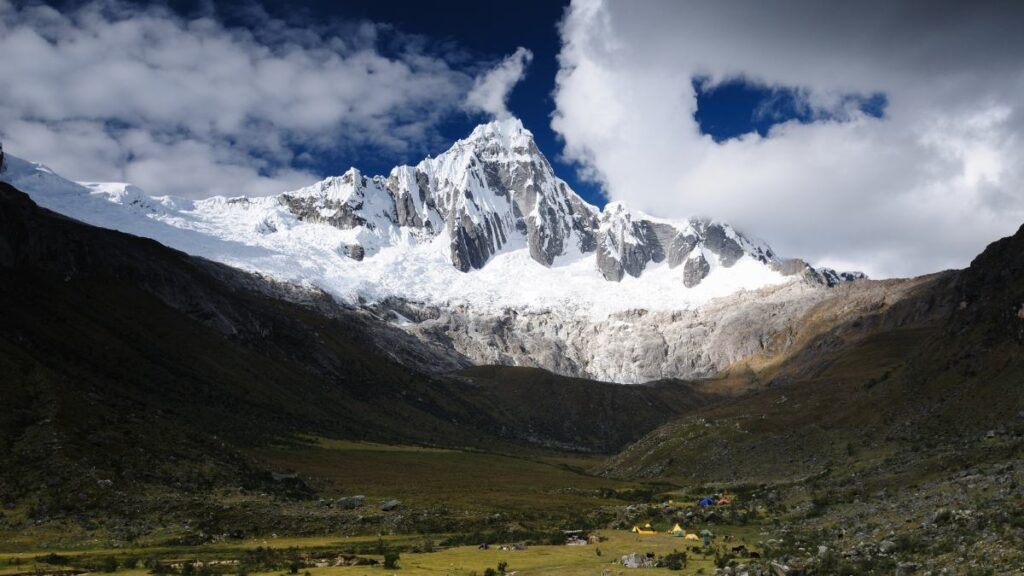
Distance: 50 km / 31 miles
Duration: 4 days
Max Altitude: 4,750m (15,584 ft) at Punta Unión Pass
Permit Required: Entry fee for Huascarán National Park
Santa Cruz is the poster child of the Cordillera Blanca. If you’ve seen photos of turquoise alpine lakes beneath knife-like peaks, it was probably from this trail. It’s one of the most popular hikes in Peru’s northern Cordillera Blanca, and for good reason because it’s drop-dead gorgeous and logistically simple.
The route usually runs from Vaquería to Cashapampa, or vice versa, passing through dramatic valleys, glacier-fed rivers, and the epic Punta Unión Pass. Each day brings new mountain landscapes that make your camera work overtime. It’s also a great warm-up for tougher hikes like the Huayhuash Circuit.
This trek doesn’t go to Machu Picchu (in fact, it’s on the other side of Peru near the town of Huaraz), so it’s often less crowded with a more alpine vibe. You’ll camp every night, but many tours include donkeys to carry gear, cooks, cozy tents and delicious meals.
If you’re looking for a hike that’s accessible, scenic, and not at full-throttle intensity, this is your multi-day hiking trail.
8. Huayhuash Circuit
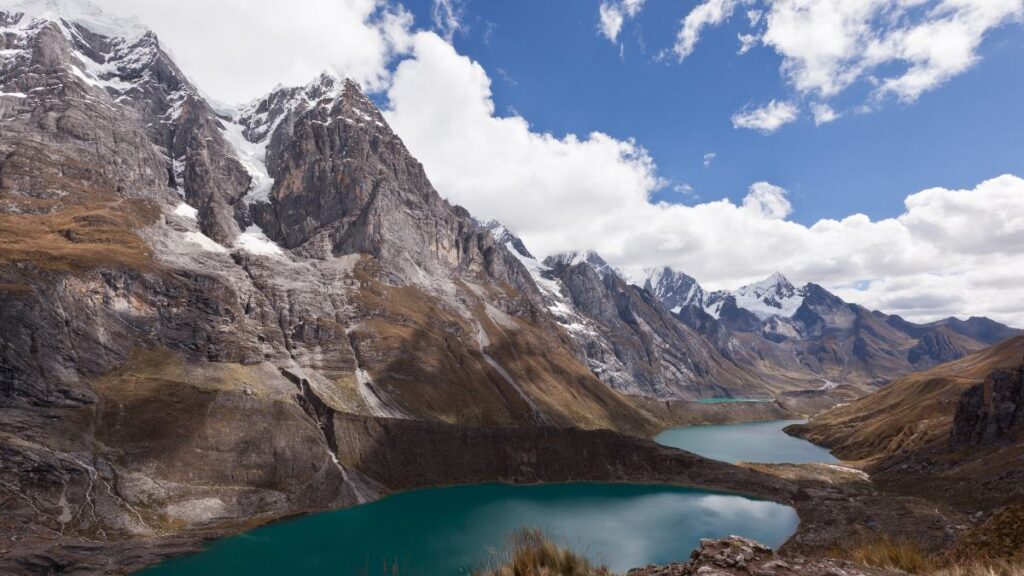
Distance: 130–180 km / 81–112 miles (varies by route)
Duration: 8–12 days
Max Altitude: Over 5,000m (16,400+ ft)
Permit Required: Multiple local community fees
The Huayhuash Circuit is Peru’s heavyweight trek. It’s often ranked among the top 10 treks in the world, and once you see the views, you’ll get why. You’re encircled by icy giants like Siula Grande (made famous by the documentary Touching the Void), hiking through alpine dreamscapes for days on end.
Expect brutal ascents, high-altitude passes almost daily, and zero tourist infrastructure. This is the Andes mountain range at their most raw and remote. You’ll pass mirror-clear lakes, snowy ridgelines, and valleys with no sign of civilization.
Due to the length, altitude, and remoteness, most people go with a guided hiking tour that includes mules, a cook, and a full support team. This is not a DIY backpacker trail unless you’re very experienced.
It’s the ultimate challenge for hardcore trekkers. If you’re fit, acclimatized, and want the most epic adventure Peru has to offer, then this is the one for you.
9. Rainbow Mountain Day Hike

Distance: 10 km / 6.2 miles
Duration: 1 day
Max Altitude: 5,200m (17,060 ft)
Permit Required: Entry ticket at the site
This one’s short but steep and colorful. Rainbow Mountain, or Vinicunca, shot to fame thanks to Instagram, but it’s still worth the trip. The mountain’s natural mineral bands create a surreal rainbow-striped ridge that looks painted by hand.
The hike itself is a high-altitude out-and-back, and despite being a day trip, it’s no walk in the park. Most of the trail sits above 4,600m, so you’ll feel the altitude even if it’s only a few hours of hiking.
Continue into Red Valley if you’ve got the legs, as it’s much quieter, redder, and honestly more impressive than the main viewpoint. Just bring layers. This place can snow, rain, and fry you with sun in a single morning.
If you’re short on time but want a taste of Peru’s high-altitude beauty, this is a solid (and photogenic) option.
10. Laguna 69 Day Hike
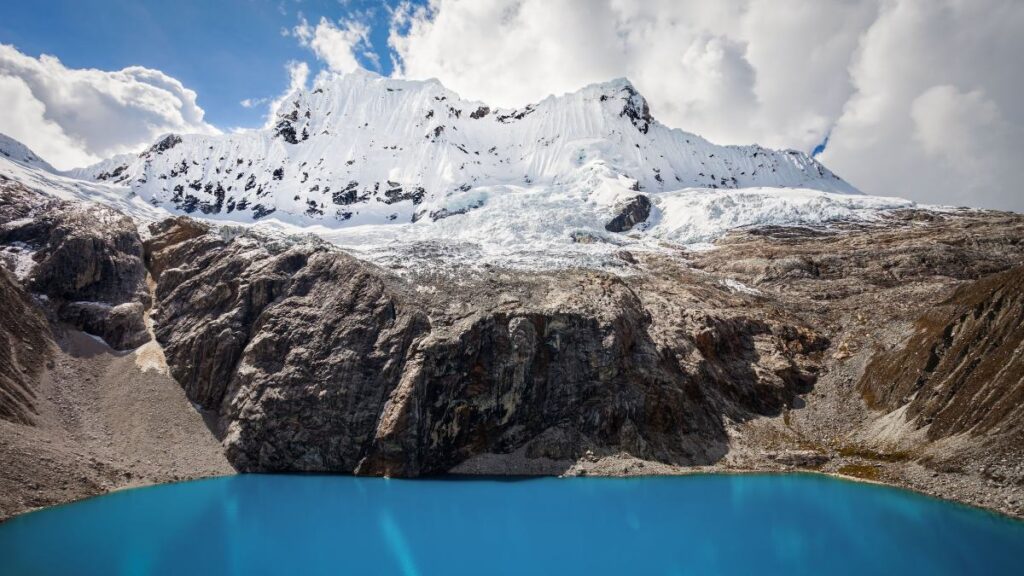
Distance: 13.8 km / 8.6 miles (round trip)
Duration: 5–6 hours hiking (full-day trip with transport)
Max Altitude: 4,600m (15,092 ft)
Permit Required: Yes (Huascarán National Park entry fee)
Laguna 69 is a high-altitude gem nestled in Peru’s Cordillera Blanca, renowned for its striking turquoise waters set against a backdrop of towering snow-capped peaks. The hike begins at Cebollapampa before ascending through diverse terrains including meadows, waterfalls, and rocky paths, culminating at the breathtaking lake.
While the trail is relatively short, the significant elevation gain and high altitude make it a moderate to challenging trek. Proper acclimatization is essential; spending a few days in Huaraz or Caraz beforehand is recommended to adjust to the altitude and reduce the risk of altitude sickness.
Most hikers opt for organized day tours from Huaraz, which include transportation to and from the trailhead. Alternatively, independent travellers can reach the starting point via public transport or taxi, though this requires more planning and flexibility.
The best time to undertake the Laguna 69 hike is during the dry season, from May to September, when the weather is more stable and the skies are clearer. Regardless of the season, it’s crucial to be prepared for sudden weather changes and to carry adequate water, snacks, and appropriate clothing for the hike.
Find Your Dream Peru Hiking Tour:
These tours fill up fast during high season in the Andes summer from June to October.
If one (or a few) caught your eye, go ahead and fill out the short form below to check availability and get personalized recommendations based on your interests and fitness level.
We’ll follow up with all the details you need to book your spot and make sure your next hike is the highlight of your time in Peru.
- 10 Best Peru Hiking Tours And Multi-Day Treks In The Andes - April 19, 2025
- 10 Best Banff Hiking Tours In The Canadian Rockies - April 19, 2025
- 10 Best Vancouver Hiking Tours In The B.C. Coast Mountains - April 19, 2025


